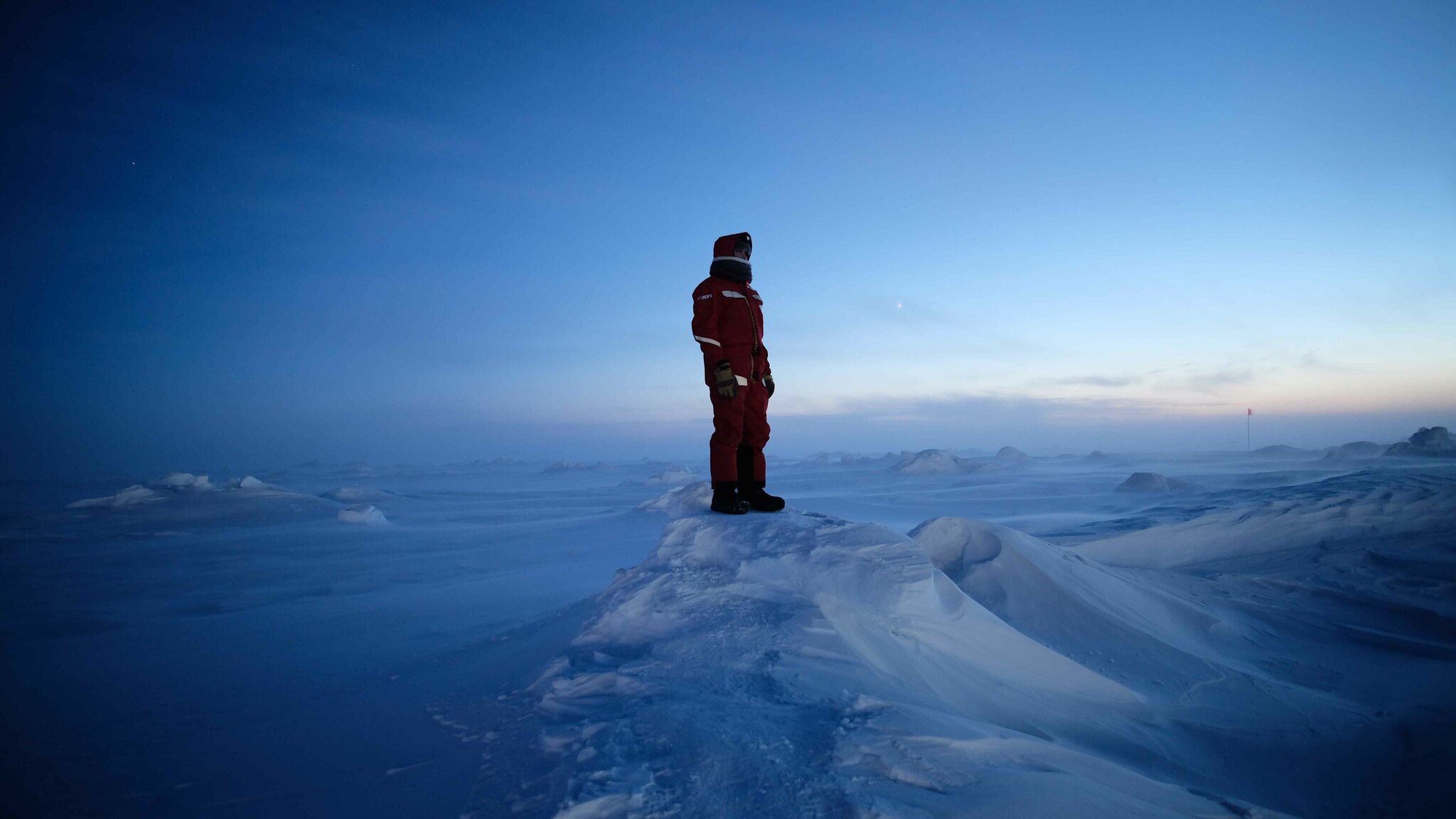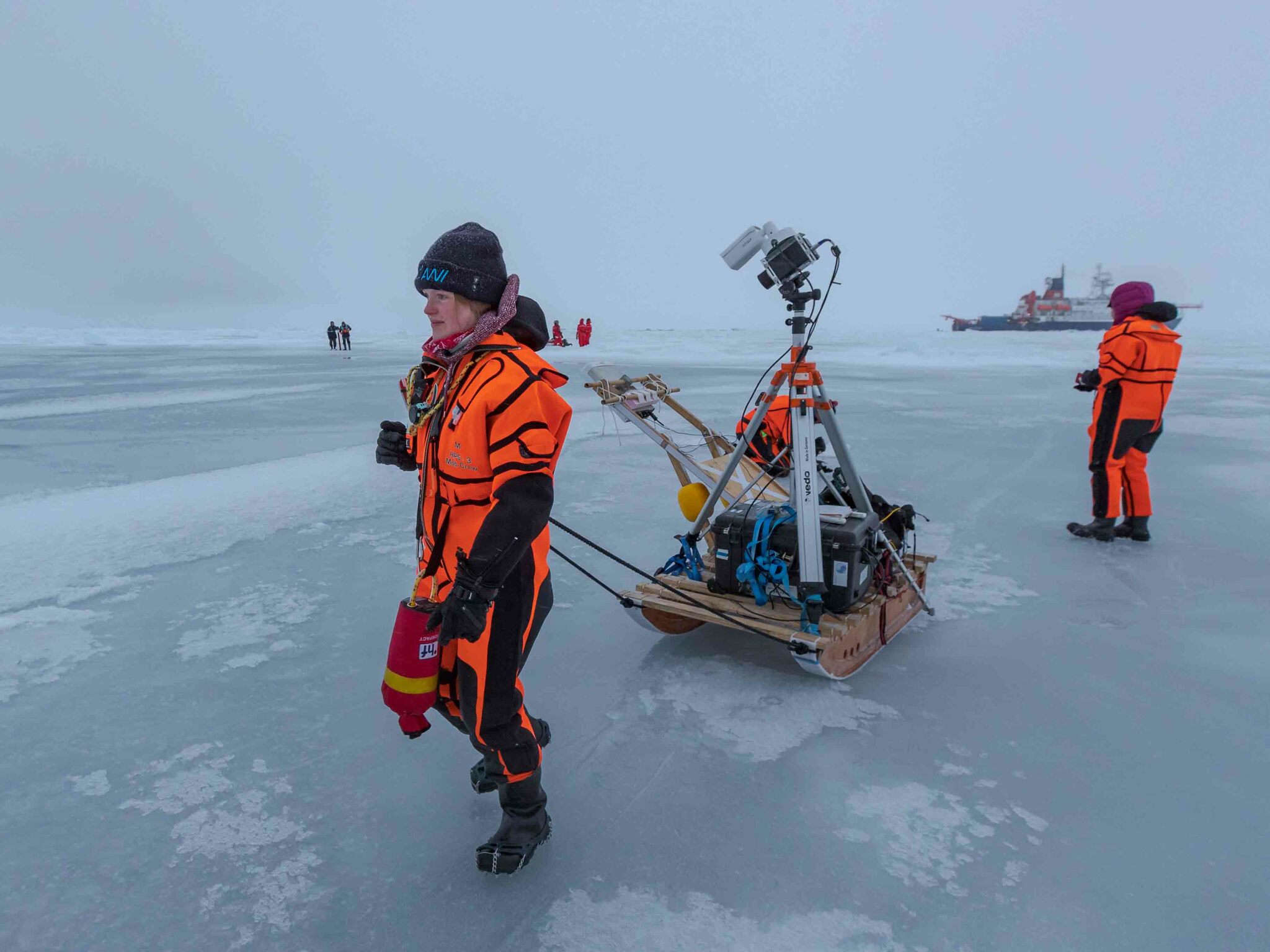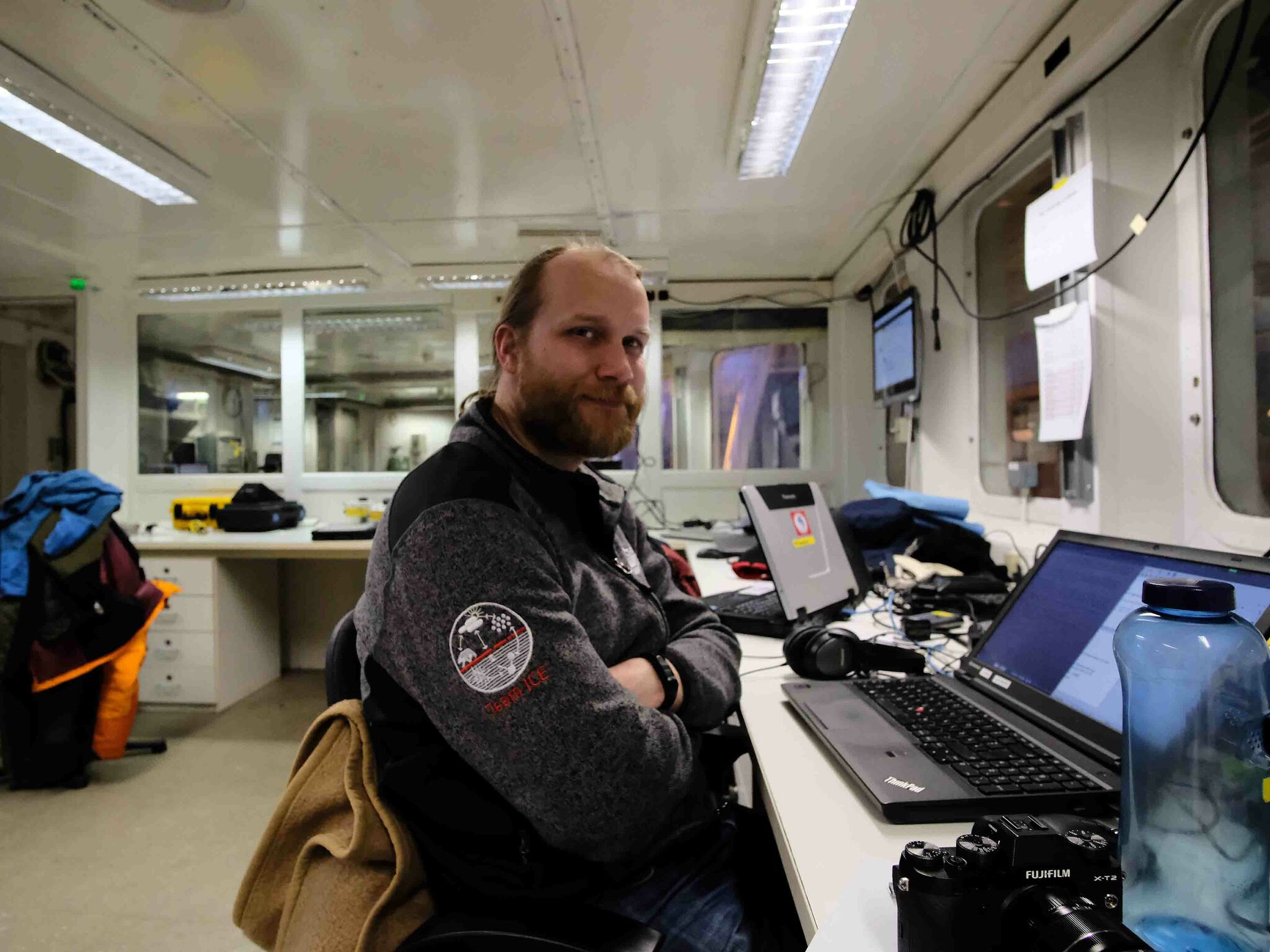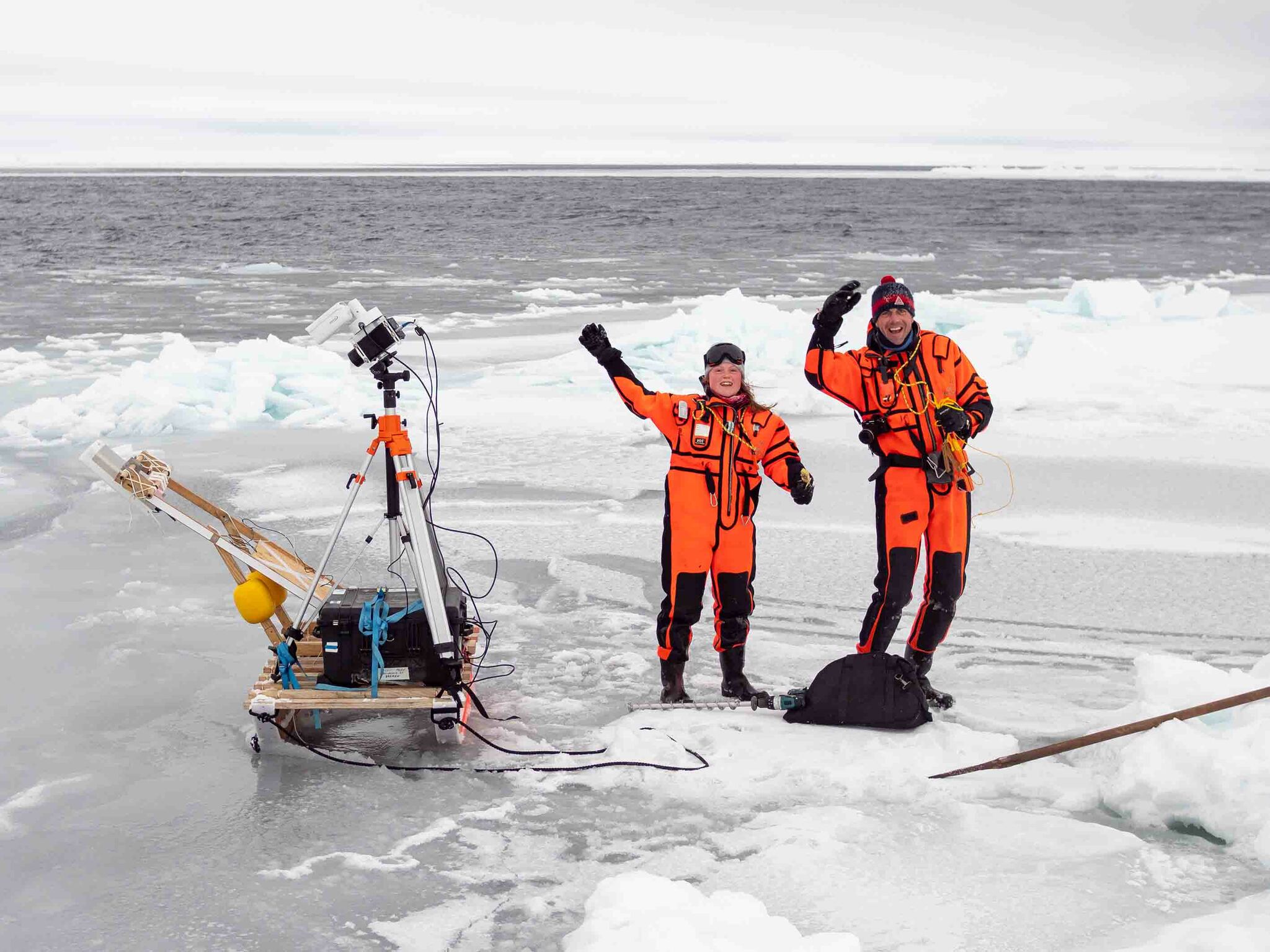
© Vishnu Nandan
MOSAiC: Weeks in the Ice, Now the Analysis
The MOSAiC Arctic expedition is over – research with the data collected can really get going now.
Weeks in the ice: Researchers from the Institute of Environmental Physics (IUP) at the University of Bremen – namely Dr. Gunnar Spreen, Dr. Marcus Huntemann, and Linda Thielke - were also a part of the unique MOSAiC 2019/2020 Arctic expedition and spent weeks in the polar region. During different expedition phases, they worked in international teams on foundation research for the improvement of polar research. The collected data is now being analyzed within various projects.
The memories of the research in the never-ending ice that lasted weeks are wonderful: “Great cooperation in interdisciplinary groups, no corona, a wonderful landscape – a massive contrast to my office at home where I currently am,” summarizes Linda Thielke, PhD student at the Institute of Environmental Physics. Her colleagues Gunnar Spreen and Marcus Huntemann feel the same. “Now, there are online meetings about MOSAiC nearly every day – from the topics of satellites to the smallest snowflakes,” says Spreen, head of the Remote Sensing of Polar Regions IUP working group. “It takes one back. But just talking about it is far less fun than carrying out research in the ice.”

© Lianna Nixon
Diversity in Research Approaches
Yet research expeditions always come to an end and the once in a lifetime journey of POLARSTERN was completed in fall 2020. “Everyone knew that a great deal of data would be collected in this year and that the analysis would follow,” says Marcus Huntemann. “It was just as important for us to experience the unbelievable diversity with which the changes to the polar region are investigated together with researchers from across the world. We usually only have our own special point of view. Now we know more about the research approaches of adjacent fields that create the big picture when put together with ours.”
“Online meetings take one back to the ice.” Dr. Gunnar Spreen, head of the IUP working group
Huntemann’s main job is to now view and analyze the data that was collected on the ice with the microwave radiometer. It is a great advantage when you helped to collect the data yourself: “You’re able to remember a lot of small details that played a role whilst the measurements were being take. You know what the snow and ice looked like at the time, how the instruments worked together, at which spot the equipment was pointing. It’s of an entirely different quality than automatically extracted data, where you were not present.” This direct information and the impressions now flow into the analysis of the recordings.

© Ian Raphael
Foundation Knowledge Expanded Significantly
It is mainly about better understanding the significance of signals that the microwave radiometers collect. How and where does the sea ice emit radiation and which characteristics does said radiation have? “In some ways, it is a very small scale study, as we are only looking at one single point on the sea ice,” explains Huntemann. “But we investigate it for a long period and in that time its condition changes. It becomes warmer, it becomes colder, snow falls, radiation changes. We are now investigating these connections in order to be able to better interpret the signals from satellite-supported radiometers in the future.” On site on the ice, the IUP researchers thus had the chance to significantly expand their foundation knowledge for the remote sensing of polar regions.
“We will be able to better interpret the signals from satellite-supported radiometers in the future.” Dr. Marcus Huntemann, Institute of Environmental Physics
“Climate change is disproportionally extreme in the Arctic. What we know to date about the rapid decrease in sea ice mainly comes from the data from satellite-supported microwave radiometers that have been used as a central observation instrument for more than 40 years,” points out Gunnar Spreen. That is a long data series. Now, we are also able to investigate and derive other parameters from our ‘fresh’ research findings. For example, if the snow characteristics, the ice thickness, or the various ice types have an effect on our measurements – and if so, in what way. If we can better understand that, we can derive these scales from our satellite measurements.” These new parameters are the “gain” from the expedition for the researchers.

© Jan Rohde
Helicopter Recordings to Ice Floe Temperature Map
In the meantime, Linda Thielke is working with the data from the infrared camera, which was fitted to a helicopter in the Arctic. “These recordings complete the scene with many point measurements on the floe. Thanks to hundreds of images, I am able to create a type of temperature map of the MOSAiC floe.” With the high-resolution data, it is also possible to analyze small-scale characteristics that are relevant for the warmth flow from the ocean into the atmosphere. From there it is then possible, for example, to derive signals for breaks in the ice, thin ice, or even open water – “rather seldom the case in the Arctic winter.”
All the data is being analyzed within differing projects – and not just by the IUP but rather with the “usual suspects” from the field of polar and ocean research: The Alfred-Wegener-Institut, the German Aerospace Center, the collaborative research center TR 172 Arctic Amplification (AC)3, the ArcTrain graduate school at the University of Bremen, and two other projects funded by the BMBF and DFG. “We will be working on the data from the research expedition for years to come – and not just us but also many PhD students who are contributing to the analysis now and will attain scientific qualifications in this manner,” says Gunnar Spreen happily.